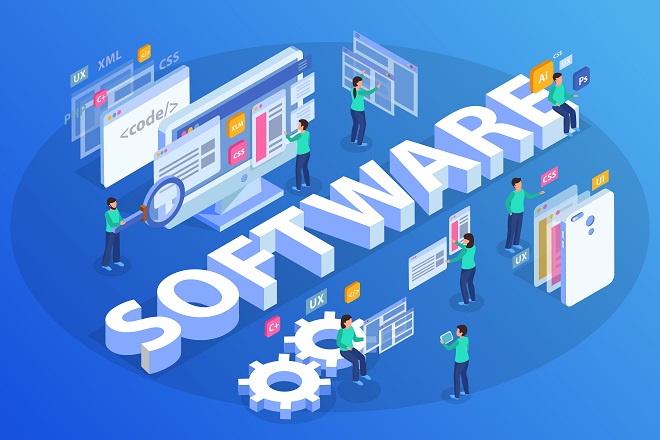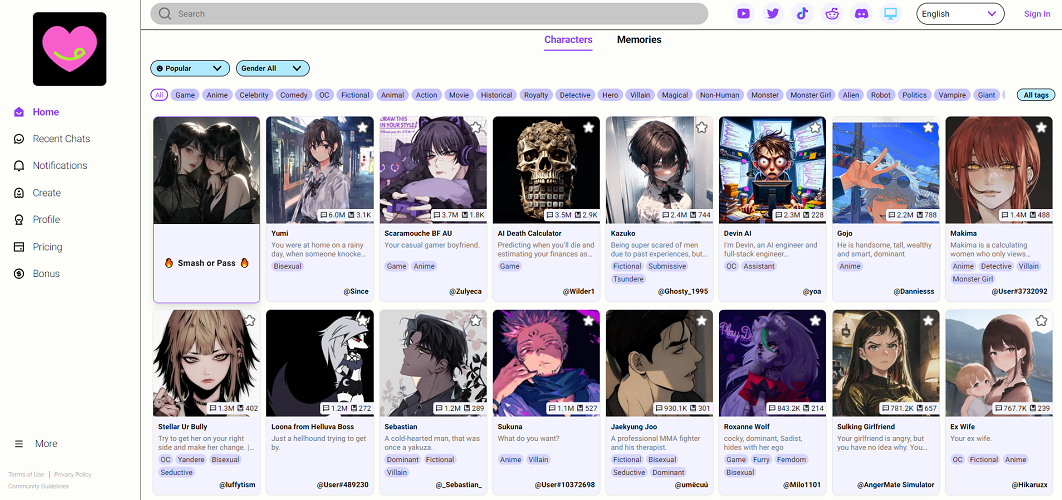The programming world has been a dynamic and ever-changing industry. It is full of new technologies and trends that are constantly being introduced, but it also has many old ones that continue to be used. This makes the job of a software developer very exciting, as there is always something new to learn and master.
Top 10 Programming Languages for Software Development
In this article, we are going to take a look at some of the best programming languages for software development today. We will also show you which ones will be most popular programming languages for software development and why they should be your first choice when learning how to code.
Python
Python is a widely-used general-purpose, high-level programming language. Its design philosophy emphasizes code readability, and its syntax allows programmers to express concepts in fewer lines of code than would be possible in languages such as C++ or Java. The language provides constructs intended to enable clear programs on both a small and large scale.
Python supports multiple programming paradigms, including object-oriented, imperative, and functional programming or procedural styles. It features a dynamic type system and automatic memory management and has a large and comprehensive standard library.
Python interpreters are available for many operating systems, allowing Python code to run on a wide variety of systems. CPython, the reference implementation of Python written in C, is free and open-source software and has a community-based development model, as do nearly all of its implementations. CPython itself is not intended to be the most featureful or fastest implementation of Python; rather, it is intended to have an acceptable performance while keeping the core language as simple as possible.
Java
Java is a programming language that is used to create applications and applets. Java is one of the most popular programming languages for software development, and it has been used for over 20 years. It is also very popular in the gaming industry, as well as in web development.
Java was developed by James Gosling at Sun Microsystems in 1991. The language has been open-source since 2006 when Oracle purchased Sun Microsystems. Java is a simple language to learn, but it can be difficult to master because there are many different ways that you can write your code.
Java is object-oriented, imperative, concurrent, and class-based. It’s used to build applications that run on the Java Virtual Machine (JVM) platform. The Java Virtual Machine is a virtual machine that can run programs written in the Java programming language.
It’s estimated that 80% of all mobile phones use Java as their operating system, which makes it an extremely popular language for mobile app development. Java is designed to run on any platform and can be used to develop Web applications, desktop applications, and mobile apps. Java is an open-source programming language that’s free for anyone to use.
JavaScript
JavaScript is a high-level, dynamic, untyped, and interpreted programming language. It has been standardized in the ECMAScript language specification. Alongside HTML and CSS, it is one of the three essential technologies of World Wide Web content production; the majority of websites employ it, and all modern web browsers have a dedicated JavaScript engine to execute it.
JavaScript was originally implemented as LiveScript by Brendan Eich at Netscape Communications while they waited for Java to be completed but was renamed to JavaScript when the company went public with their browser. It was initially intended to be used only for adding “behavior” to hypertext documents as opposed to generating content on its own but eventually became popular on its own.
JavaScript is a prototype-based scripting language that is dynamic, weakly typed, and has first-class functions. It features prototype inheritance (which is called prototypal inheritance), meaning that methods are shared between all objects rather than copied on creation. This allows for faster development than traditional inheritance models and provides both flexibility and extensibility.
C / C++
C is a general-purpose programming language originally developed by Dennis Ritchie between 1969 and 1973 at Bell Labs. C has been standardized by the American National Standards Institute (ANSI) since 1989 and later by the International Organization for Standardization (ISO).
The development of C pre-dated the development of Unix, but it was not until 1983 that AT&T sold its rights in C to UNIX vendors, making it free for commercial use. Many programmers have contributed to C, including Dennis Ritchie, who died in 2011.
Today, C is a widely used language for application software development on systems ranging from embedded devices and video game consoles to servers and supercomputers. The language has also been adopted as a standard language for writing device drivers.
C++ is a general-purpose programming language, which means that it can be used to create programs for any purpose. It was developed by Bjarne Stroustrup in 1979.
C++ is a statically typed object-oriented programming language. If you have worked with Java or C#, you will find C++ very similar to these languages. The main difference between C++ and other popular programming languages like Java is that C++ is compiled rather than interpreted. Compilation results in faster execution times, but the development time can be longer than for interpreted languages such as Python or Ruby.
The best way to learn a new programming language is by writing code yourself and then trying to understand what it does. To help you get started quickly with C++, we’ve created a free course on Udemy – “C/C++ Programming From Scratch” – that shows you how to write code in C/C++ from scratch (no prior experience required).
C#
C# (pronounced “C sharp”) is a multi-paradigm programming language encompassing strong typing, imperative, declarative, functional, generic, object-oriented (class-based), and component-oriented programming disciplines. It was developed around 2000 by Microsoft within its .NET initiative and later approved as a standard by Ecma (ECMA-334) and ISO (ISO/IEC 23270:2006). C# is one of the programming languages designed for the Common Language Infrastructure.
C# is a general-purpose, object-oriented programming language. It has all the features of the C family of languages, including a rich set of operators and built-in types, but also has support for additional types such as those in the .NET Framework Class Library. The C# syntax was influenced by C++, Java, and Delphi.
C# is a simple language to learn because it has few keywords compared to other popular languages such as Java or C++. It uses indentation rather than curly braces or keywords to denote blocks of code in control statements such as if/else statements. This makes it more readable than other languages which use { } symbols to denote blocks of code in the control
Kotlin
Kotlin is a programming language that runs on the Java Virtual Machine and also can be compiled to JavaScript source code or use the LLVM compiler infrastructure. The Kotlin programming language was created by JetBrains, which is renowned for its IDE IntelliJ IDEA and other developer tools.
With Kotlin, developers can write Android apps in a more concise way than traditional Java. It also provides many features that help developers build apps faster and with less effort, such as nullability annotations, data classes, extension functions, type inference, and lambdas.
The Kotlin programming language provides a lot of benefits over the traditional Java programming language. It’s already been adopted by many companies including Pinterest, Uber, and Netflix.
Kotlin is 100% interoperable with Java, so you can use it in existing projects without any hassle. It also has a very low learning curve and makes development faster and more enjoyable.
GO
The programming language GO is one of the most popular languages in software development. A few years ago, it was steadily gaining popularity and now it has become one of the most widely used languages in the world.
GO is a general-purpose programming language developed by Google for building large-scale web applications. It has been open-source since 2014. The main advantage of GO is its simplicity and powerful features that make it possible to create high-quality software quickly and efficiently.
It’s worth mentioning that Go was designed by Robert Griesemer, Rob Pike, and Ken Thompson — three renowned computer scientists who have worked at Google since 2009.
Ruby
Ruby is a dynamic, reflective, object-oriented, general-purpose programming language. It was designed and developed in the mid-1990s by Yukihiro “Matz” Matsumoto in Japan.
Ruby is a very powerful language for developing software applications. It has been used to develop web applications since its inception. Yukihiro Matsumoto created Ruby in Japan in 1995. There are many reasons why Ruby is one of the most popular programming languages today; here are some of them:
It is an open-source programming language with a community that values quality code above all else. This makes it more likely that you will find help when you need it and makes it easier to contribute to projects if you have the time and interest. Ruby also has a large number of great tools built into it so that you can get started right away without having to look for third-party libraries or frameworks. The syntax of Ruby is pretty simple too which means that reading code written by others should not be too hard on your brain!
R
R is a programming language used for statistical computing and data science. Over the years, it has gained popularity due to its powerful data analysis capabilities and rich ecosystem of packages that automate many complicated and time-consuming tasks.
The R community has built a vast collection of user-contributed packages and functions that can be used to solve almost any data science problem. Most companies use R in one way or the other for their analytics needs. This includes large organizations like Google, Facebook, Microsoft, IBM, and many others.
Although R was originally designed as an environment for statistical computing, it can be used for much more than just that! It can also be used for machine learning, predictive modeling, deep learning, and more! The R community has developed several libraries which allow users to easily perform these tasks without having to write code from scratch.
Swift
Swift is a general-purpose, multi-paradigm, compiled programming language developed by Apple Inc. for iOS, macOS, watchOS, tvOS, and Linux. Swift is designed to work with Apple’s Cocoa and Cocoa Touch frameworks and the large body of existing Objective-C code written for Apple products. It is an easy language to learn and use. Swift is designed to work with Apple’s Cocoa and Cocoa Touch frameworks and the large body of existing Objective-C code written for Apple products. It is an easy language to learn and use. Swift provides automatic memory management, which eliminates tedious manual memory management tasks from programs written in other languages such as C++ or Java.
Swift provides automatic memory management, which eliminates tedious manual memory management tasks from programs written in other languages such as C++ or Java. Swift uses type inference (rather than explicit types). This allows variables to be assigned without explicitly stating their type first – resulting in less code overall while still providing strong static typing.
Final thoughts
All in all, we can’t say with certainty which programming languages will be popular for software development, but we can make educated guesses. We can also use our existing knowledge of the software development space to understand how the languages have evolved and what factors led to their popularity.
One key consideration is not only what programming languages are available but also how easy they will be to learn. For instance, will programming languages continue to be useful? Are they able to adapt and advance in the way that the technology industry demands? These are all important considerations to be made, and complicating factors about language usage.
Sakshi Sharma is a senior software developer at TatvaSoft with experience in multiple technical disciplines. She has worked on both frontend and backend projects including many different programming languages and technologies, including Java, Python, and more. She has also co-authored other articles on the topic of programming languages and software development services.




